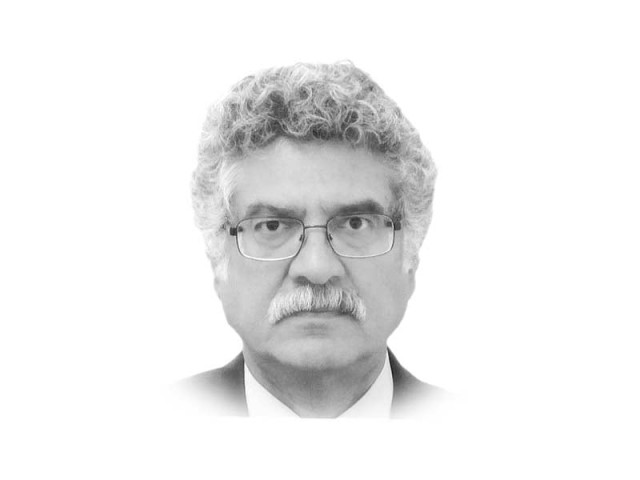Vipin spills the beans
India has come up with its Cold Start doctrine to fight a limited conventional war with Pakistan

The writer is a former Ambassador of Pakistan. The views expressed here are his own
Since the nuclear tests in 1998, Indian governments have espoused a NFU policy as part of their nuclear doctrine generating Western appreciation for India as a “responsible” nuclear weapon State. By contrast, Pakistan has been chided for its refusal to accept NFU despite the fact that Pakistan’s reliance on nuclear weapons is driven by the objective of cost — effectively deterring the much larger Indian conventional forces backed by a huge nuclear arsenal. This is based on the same logic that US/Nato have used against the larger Soviet conventional forces and continue to do so against Russia. Moreover, Pakistan has offered instead of NFU of nuclear weapons, which is essentially a political commitment by India, a policy of No First Use of Force to ensure regional security and stability — an offer that India has consistently rejected.
On the contrary, India has come up with its Cold Start doctrine to fight a limited conventional war with Pakistan despite the existence of nuclear deterrence between them. In response, Pakistan has been forced to pursue its Full Spectrum deterrence policy to deter any aggression by India — whether conventional or nuclear. Accordingly, the operationalisation of India’s Cold Start capability has been countered by Pakistan’s low yield nuclear weapons and delivery systems — termed Tactical Nuclear Weapons (TNWs) by Western commentators — which are essentially designed to ensure the strategic objective of preventing conflict, whether conventional or nuclear. It is against this back-drop that Narang’s disclosures must be viewed — as essentially to re-establish the salience of Cold Start.
For Pakistan, ofcourse, these disclosures do not come as a surprise since Indian NFU is really a sham and political rhetoric. Besides, no responsible defence planners any where would accept political assertions from the opponent, especially since these are non-verifiable. For instance, the Indians themselves have not accepted the Chinese NFU policy which is much more credible since it is backed up by the necessary deterrent posture. By spilling the beans, Narang has only validated Pakistan’s deterrence policy.
Accordingly, in a damage limitation exercise, Indian officials have denied Narang’s arguments but his claims are based on undeniable facts. Firstly, as he points out, India’s NFU is already eroded because it is qualified by threatening nuclear use against chemical and biological weapons, the other two weapons of mass destruction. Furthermore, he quotes then Defence Minister Manohar Parrikar that “India should not declare whether it has a NFU policy” and questions Parrikar’s subsequent claim that this was his “personal” view on the grounds that a serving minister cannot articulate any “personal” opinion. Then there are comments by former chief of India’s Strategic Forces, General Nagal, questioning the “morality” of a NFU policy. Narang also goes on to quote former National Security Adviser Shivshankar Menon that “there is a political grey area as to when India could use nuclear weapons first against a nuclear weapon State” and that “India’s nuclear doctrine has far greater flexibility than it gets credit for”.
Having de-bunked Indian NFU policy, Narang projects the manner in which India would “go first” against Pakistan with nuclear weapons. Terming it a “Preemptive nuclear Counter Force”, he claims that any “imminent” Pakistani use of its TNWs in response to an Indian conventional attack (under Cold Start) would lead India to initiate a “preemptive” nuclear first strike against Pakistan’s nuclear assets so that Pakistan is unable to strike back at India with nuclear weapons.
However, in an unintended and implicit acknowledgement of Pakistan’s deterrence capabilities, Narang admits that India cannot yet implement such a strategy. This is because India does not have “a good fix on all the locations of Pakistan’s strategic forces”, since these are deliberately dispersed and not kept in static locations. To overcome this, Narang advocates increase in numbers of Indian nuclear warheads, building Ballistic Missile Defences and acquiring Multiple Independently Targeted Reentry Vehicles (MIRV) capability which he says, and as Pakistan knows, are already under development in addition to India’s triad of land, air and sea based nuclear delivery systems.
These developments underscore the importance and fore-sight of Pakistan’s policy of credible Full Spectrum deterrence to neutralise Indian threats at the conventional, tactical and strategic levels. To ensure continuing credibility and effectiveness of this policy, Pakistan will have to take into account the dynamic nature of deterrence depending upon doctrinal and technological developments by India. Of primary importance is the need to ensure a credible second-strike capability to deter any type of Indian aggression.
Accordingly, the obvious conclusion is that India’s attempts to achieve strategic superiority against Pakistan are futile. For every more there is a counter-move. Deterrence stability can only be enhanced through credible mutual assured destruction. This was possible after the 1998 nuclear tests when Pakistan offered India a Strategic Restraint Regime to prevent a strategic arms race. Rejecting this offer, India proceeded to develop de-stabilising weapon systems like the nuclear triad and missile defence apart from operationalising its dangerous Cold Start doctrine only to be neutralised by Pakistan’s Full Spectrum deterrence. This spiral can go on, leading to another round of a deadly and destabilising strategic arms race. Or India can take up Pakistan’s concurrent offer of dialogue to stabilise mutual deterrence and resolve outstanding disputes like Kashmir for the sake of strategic stability in South Asia.
Published in The Express Tribune, March 30th, 2017.
Like Opinion & Editorial on Facebook, follow @ETOpEd on Twitter to receive all updates on all our daily pieces.














COMMENTS
Comments are moderated and generally will be posted if they are on-topic and not abusive.
For more information, please see our Comments FAQ